Caribbean Free Trade Association
| Caribbean Community |
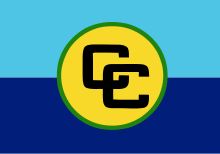 This article is part of the series: |
Community Council
|
Institutions
|
Related Institutions
|
Projects
|
Other
|
The Caribbean Free Trade Association (CARIFTA) was organised to provide a continued economic linkage between the English-speaking countries of the Caribbean following the dissolution of the West Indies Federation which lasted from January 3, 1958 to May 31, 1962.[1]
History
The origins of CARIFTA lay in a meeting on July 4, 1965 between the Prime Ministers of Barbados and British Guiana (Errol Barrow and Forbes Burnham respectively) to discuss the possibility of establishing a free trade area between the two territories, which at the time were moving towards independence from the United Kingdom. The discussions revolved around establish a free trade area between only those two countries initially and then extending it to the rest of the Caribbean when the other countries in the Commonwealth Caribbean were ready to join.[2]
These bilateral discussions between Barrow and Burnham were later expanded to include V. C. Bird of Antigua and the three leaders ultimately signed the initial CARIFTA Agreement (the Agreement of Dickenson Bay in Antigua) on December 15, 1965.[1] [3] The original date envisioned for the Caribbean Free Trade Area to come into existence, according to the Dickenson Bay Agreement, was May 15, 1967. However, as a result of shuttle diplomacy engaged by Dr. Eric Williams, Prime Minister of Trinidad and Tobago, (through one of his ministers, Kamaluddin Mohammed) this was postponed as in order to allow Trinidad and Tobago to be included in the agreement and to generally make the agreement region-wide from the beginning. [3] [2] Dr. Williams had for years been advocating the establishment of a Caribbean Economic Community and was now fearful that Barbados, Antigua and Guyana were planning to form a free trade area between themselves to the exclusion of Trinidad and Tobago.[3] The push to make the free trade area a region-initiative was successful and the issue was discussed at the fourth Conference of the Heads of Government of Commonwealth Caribbean Countries in Bridgetown, Barbados in October 1967. There it was resolved to introduce the free trade area by May 1, 1968 with the delegations of Montserrat and British Honduras (Belize) entering reservations to the conclusions of the resolution due to the constitutional status of their governments at the time.[4] As a result of this a supplementary agreement to the original Carifta Agreement was signed in Georgetown, Guyana on March 15, 1968, and in St John’s, Antigua on March 18, 1968 with Carifta Day set for May 1, 1968.[3]
The new CARIFTA agreement came into effect on May 1, 1968, with the participation of Antigua, Barbados, Trinidad and Tobago and Guyana. The original idea to permit all territories in the region to participate in the Association was achieved a few months later with the entry of Dominica, Grenada, St. Kitts/Nevis/Anguilla, Saint Lucia and St. Vincent in July and of Jamaica and Montserrat on August 1, 1968. British Honduras (Belize) became a member in May 1971 [5] following its government's agreement to become a member of the Association (and had promised to take the necessary steps to become so) in February 1969 at a Commonwealth Caribbean Heads of Government Conference in Port-of-Spain, Trinidad and Tobago.[6]
Function
The Caribbean Free Trade Association was created to improve relations between the various Caribbean islands. One of the reasons of the formation of the CARIFTA was to increase the quota and variety of goods able to be sold. Specifically, CARIFTA was intended to encourage balanced development of the Region by the following:
- increasing trade - buying and selling more goods among the Member States
- diversifying trade - expanding the variety of goods and services available for trade
- liberalising trade - removing tariffs and quotas on goods produced and traded within the area
- ensuring fair competition - setting up rules for all members to follow to protect the smaller enterprises
In addition to providing for free trade, the Agreement sought the following:
- ensure that the benefits of free trade were equitably distributed
- promote industrial development in the Less Developed Countries (LDCs)
- promote the development of the coconut industry (through an Oils and Fats Agreement) which was significant in many of the LDCs
- rationalise agricultural production but in the interim, facilitate the marketing of selected agricultural products of particular interest to the LDCs (through the Agricultural Marketing Protocol); and
- provide a longer period to phase out customs duty on certain products which were more important for the revenue of the LDCs[1]
Although CARIFTA itself was limited to trade in goods, it freed approximately 90% of intra-regional trade in manufactured goods and instituted managed intra-regional trade in some agricultural products. [7]
Transformation and legacy
In 1973, CARIFTA became superseded by the Caribbean Community (CARICOM) following a decision, at the Seventh Heads of Government Conference in October 1972, to transform CARIFTA into a Common Market and establish the Caribbean Community of which the Common Market would be an integral part.[5] At the Eighth Heads of Government Conference in April 1973, the Georgetown Accord was adopted, which set out the details of how CARIFTA was to be replaced by CARICOM.[8] The Treaty of Chaguaramas declared that CARIFTA would cease to exist on 1 May 1974 when the remaining CARIFTA members all acceded to CARICOM.
The regional co-operation under the CARIFTA agreement also led to the foundation of several common institutions. The Commonwealth Caribbean Regional Secretariat was set up in Georgetown (Guyana) and the Caribbean Development Bank was established in Bridgetown, Barbados.[9]
One of the legacies of CARIFTA is an international youth athletics event for junior athletes from the member states started in 1972 by the association and inaugurated (and thought up) by Austin Sealy (then president of the Amateur Athletic Association of Barbados) to mark the transition from CARIFTA to CARICOM called the CARIFTA Games. In 1985, a similar set of games, The CARIFTA Aquatics Championships, started.
Membership
In 1965, on December 15, the CARIFTA was founded by 3 countries:[5]
-
 Antigua and Barbuda (1965)
Antigua and Barbuda (1965) -
 Barbados (1965)
Barbados (1965) -
 Guyana (1965)
Guyana (1965)
The following countries joined the agreement:[5] [1]
-
 Trinidad and Tobago (May 1, 1968)
Trinidad and Tobago (May 1, 1968) -
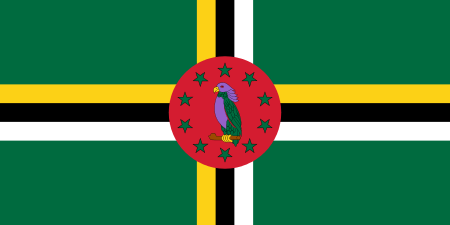 Dominica (July 1, 1968)
Dominica (July 1, 1968) -
 Grenada (July 1, 1968)
Grenada (July 1, 1968) -
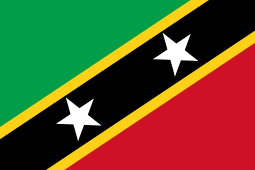 Saint Kitts and Nevis (July 1, 1968)
Saint Kitts and Nevis (July 1, 1968) -
 Saint Lucia (July 1, 1968)
Saint Lucia (July 1, 1968) -
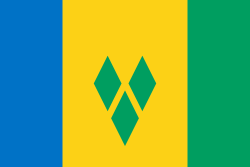 Saint Vincent and the Grenadines (July 1, 1968)
Saint Vincent and the Grenadines (July 1, 1968) -
 Jamaica (August 1, 1968)
Jamaica (August 1, 1968) -
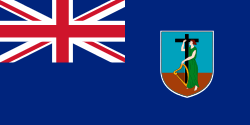 Montserrat (August 1, 1968)
Montserrat (August 1, 1968) -
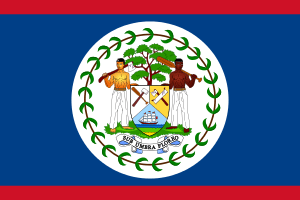 Belize (May 1971)
Belize (May 1971)
In the 1970s, around the time CARIFTA was being transformed into CARICOM the following country was granted Liaison Status/Observer Status in the Association:[10] [11]
-
 Suriname (March 1973)
Suriname (March 1973)
Potential Members
The Bahamas
Although never a member of the Association itself, The Bahamas had begun involvement in the regional cooperation and integration initiative through participation in the Heads of Government Conferences of the Commonwealth Caribbean starting in 1966.[12] This participation was quite active with The Bahamas' Premier, Lynden Pindling, sharing experiences and offering suggestions with regards to the establishment and operation of a regional air carrier at the 1969 Conference,[6] and with The Bahamas (along with Belize which was not as yet a member of the Association) being invited to participate in the initial meeting (and in all future discussions) of the regional Ministers of Education in regards to the establishment of the Caribbean Examinations Council and the overall regional plan for cooperation in education at the 1970 Heads of Government Conference.[13] The Bahamas was also quite involved in the transformation of CARIFTA into the Caribbean Community, with the 1972 Conference (at which it was agreed to form the Caribbean Community) appointing a Committee of Attorneys-General of all CARIFTA member states and the Bahamas to review the legal implications of establishing the Community itself and to prepare a draft Treaty for creating the Community. The 1972 Conference also agreed to deepen fiscal, financial and monetary cooperation within the Commonwealth Caribbean and to that end established a Standing Committee of Ministers of Finance of CARIFTA member states and The Bahamas as a permanent institution for regional economic cooperation.[14] In April 1973, at the final meeting of the Commonwealth Caribbean Heads of Government before the establishment of the Caribbean Community, the Conference welcomed the upcoming independence of The Bahamas in July 1973 and looked forward to its participation in the Caribbean Community.[15]
Haiti and the Dominican Republic
In January 1970, at the fifth meeting of the CARIFTA Council, Trinidad and Tobago proposed that the Bahamas, Haiti and the Dominican Republic be admitted as members of CARIFTA. This proposal was generally positively received. The inclusion of those states would have expanded CARIFTA's market by 8.5 million people and increased the subscribed capital of the Caribbean Development Bank (which had been linked with the formation and operation of CARIFTA) by approximately US$17 million. [16] By 1971 however, Errol Barrow, Prime Minister of Barbados, saw no real advantage in including Haiti and the Dominican Republic (and Cuba) in CARIFTA unless a quota system was applied to their products as he considered their economies to be duplicate to those of the existing CARFITA states.[17]
The Dominican Republic first signaled its intention to join a regional economic bloc at the a Summit of American leaders in Uruguay in April 1967 when it signed the Declaration of the Presidents of America. This Declaration outlined the aim for the creation of Latin American Common Market through the vehicles of the Latin American Free Trade Association (LAFTA) and Central American Common Market (CACM). Subsequently the Dominican Republic looked into both LAFTA and the CACM, before pursuing discussions on joining CARIFTA in 1970.[16][18] However the discussions did not result in Dominican membership before CARIFTA was ended in favour of forming CARICOM in 1973-1974.
Other States
At the 1972 Conference of Commonwealth Caribbean Heads of Government, consideration was given to widening CARIFTA but the immediate priority was agreed to be to improve the position of the less developed territories in the Association and to study the possibilities of including all the Caribbean islands and Suriname in the integration movement.[14]
References
- 1 2 3 4 Secretariat of the Caribbean Community - The Caribbean Free Trade Association (CARIFTA)
- 1 2 The 2009 ERROL BARROW MEMORIAL LECTURE
- 1 2 3 4 Kamal, A True Caribbean Man
- ↑ 4th Conference of Heads of Government of Commonwealth Caribbean Countries, 23-27 October 1967, Bridgetown, Barbados Archived March 19, 2015, at the Wayback Machine.
- 1 2 3 4 History of the Caribbean Community Archived October 21, 2012, at the Wayback Machine.
- 1 2 5th Conference of Heads of Government of Commonwealth Caribbean Countries, 3-5 February 1969, Port-of-Spain, Trinidad and Tobago Archived April 13, 2015, at the Wayback Machine.
- ↑ Caribbean Community: The Elusive Quest for Economic Integration
- ↑ Economic Integration in the Caribbean: The Georgetown Accord
- ↑ Economic Integration in the Caribbean: The development towards a common labour market
- ↑ CARIFTA and Caribbean Trade: An Overview
- ↑ CARICOM: Externally Vulnerable Regional Integration
- ↑ De Lombaerde, Philippe (2008). Governing Regional Integration for Development: Monitoring Experiences, Methods and Prospects. Ashgate Publishing, Ltd. p. 34. ISBN 140-94-9871-9.
- ↑ 6th Meeting of Heads of Government of Commonwealth Caribbean Countries, 13-17 April 1970, Kingston, Jamaica Archived March 19, 2015, at the Wayback Machine.
- 1 2 7th Meeting of Heads of Government of Commonwealth Caribbean Countries, 9-14 October, 1972, Chaguaramas, Trinidad and Tobago
- ↑ 8th Meeting of Heads of Government of Commonwealth Caribbean Countries, 9-12 April 1973, Georgetown, Guyana Archived March 19, 2015, at the Wayback Machine.
- 1 2 Andic, Fuat (2010). A Theory of Economic Integration for Developing Countries: Illustrated by Caribbean Countries. Routledge. p. 176. ISBN 113-68-7858-0.
- ↑ Perusse, Roland (1971). A Strategy for Caribbean Economic Integration. North-South Press. p. 212.
- ↑ Information Services on Latin America (ISLA), Volume 19. Information Services on Latin America. 1970.
See also
External links
- Dunker, Jörg (2002). Regionale Integration im System des liberalisierten Welthandels. EG und NAFTA im Vergleich. Frankfurt/Main: Peter Lang. ISBN 3-631-37941-2. P. 57.
- Caricom Community Secretariat
- Caribbean trade articles from Agritrade